Last month, we chatted with Dr. Jørn Dyerberg about his major health discovery of omega-3 fatty acids in human health. While that part of the interview with Dr. Dyerberg was in press, another major confirming study was published that should be noted. In a large multi-year study, Dutch researchers reported a 62% lower risk of fatal heart attack in people consuming a modest amount of EPA and DHA (approximately 230 mg/day) from fish as compared with those consuming small amounts (approximately 40 mg/day of EPA and DHA) (1).
compared with those consuming small amounts (approximately 40 mg/day of EPA and DHA) (1).
Getting back to our main story, last month Dr. Dyerberg recounted his expedition into Greenland to discover why these remote-living Eskimos had about only one-tenth the heart disease incidence of many western countries including the United States and Denmark. The sojourns were hard physical work, and now comes the difficult detective work of solving this scientific riddle.
Jørn Dyerberg, M.D., professor and Dr. Med. Sc., has made several discoveries that elucidate many of the health benefits of omega-3 fish oils. He made five scientific expeditions to northwest Greenland examining the association between fish oil intake and coronary heart diseases in Eskimos. Dr. Dyerberg, who is Danish, hypothesized that the rarity of coronary heart disease among the Inuit could be due to the omega-3 fatty acids in their diet consisting largely of seal and cold-water oily fish.
Together with his fellow researchers, he went on to uncover the unique physiological effects of these fatty acids. His research opened new fields leading to thousands of health studies by many. His own research encompasses more than 350 scientific publications primarily concerning blood lipids, atherosclerosis, the blood coagulation system, omega-3 polyunsaturated fatty acids, trans-fatty acids and prostaglandins.
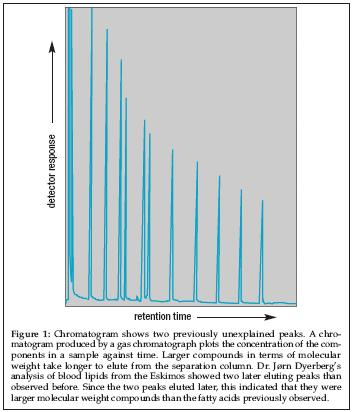
In 2007, Dr. Dyerberg was honored by the American Heart Association in “Recognition of Outstanding Scientific Contribution for the Advancement of Heart Health Worldwide.” In 2008, he received the American Dietetic Association Foundation’s Edna and Robert Langholtz International Nutrition Award.
Passwater: Dr. Dyerberg, when we left off, you were telling us about how you had discovered two before-unknown peaks in your gas chromatographic analysis of the blood samples from the Greenland Eskimos. You had reason to believe that these peaks were due to unknown fatty acid compounds in the blood.
Dyerberg: Yes, and if they were fatty acids, I would have to learn more about determining which ones they might be. So, I sought help in the interpretation of our results from Dr. Ralph Holman at the Hormel Institute at the University of Minnesota, who was the leading fatty acid analyst of the time.
Judging by the position of the peaks, Dr. Holman postulated that we had found omega-3 fatty acids in blood, quite possibly EPA and DHA.
Passwater: As I see the omega-3 story, you are the defining scientist, and your detection of these two unknown compounds in the blood of the Eskimos was the defining event that has led to an advance in nutrition that can favorably impact everyone’s health. These early chromatograms should be in a scientific museum such as the Smithsonian.
EPA and DHA hitherto were neither recognized as essential nutrients nor reported as constituents of human blood or tissue, and their function was completely unknown. Well, trying to find the answer to your question of why the Inuits had dramatically less heart disease has taken you to the end of the earth and now back to the United States where you had studied earlier.
Now that we are speaking about identifying the presence of omega-3 fatty acids, let’s just take a moment and review some basic biochemistry terminology for our readers. The omega-3 family of fatty acids is defined as fatty acids that have their first “unsaturated” carbon as the third carbon from the “omega” end of the molecule. Fatty acids are components of fats similar to how amino acids are building blocks of proteins. A fatty acid has several carbon atoms strung together like a chain with an “acid” functional group [COOH] at its beginning carbon atom. The “acid” group is easily identified because it is the only group in fatty acids that contains oxygen atoms. Not surprisingly, this first carbon atom in the fatty acid “backbone” or “chain” is designated as the “alpha” carbon.
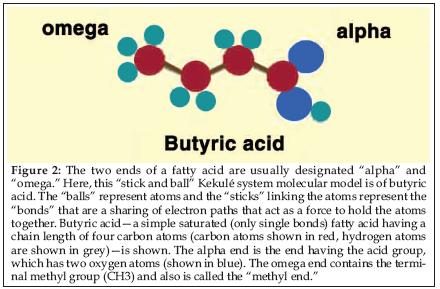
The end of the fatty acid farthest from the acid group is called the “omega” end, which is sometimes called the “methyl end.” This carbon atom is said to contain the terminal methyl group (CH3) (see Figure 2). If a carbon atom is not fully saturated with hydrogen, it is said to be “unsaturated” and is linked to a neighboring carbon atom, which is also unsaturated by a double bond. The location of the first double bond counted from the omega end denotes whether a fatty acid belongs to the omega-6, omega-3 or other omega family. Humans cannot interconvert omega-3 and omega-6 fatty acids to each other, nor can they make either of these fatty acids from scratch. Additionally, as we will discuss in the next installment of this article, all omega-3s do not function in the same way, and importantly, not all omega-3 fatty acids are biologically equal. Humans cannot readily convert significant amounts of shorter omega-3 members to EPA and DHA.
Dr. Dyerberg, in your analysis, you found compounds that were very long-chain fatty acids based on the time it took for them to elute from the gas chromatograph separation column. While it did not automatically indicate they were omega-3 compounds (since they could have been heavy omega-6 fatty acids or something else that takes an increased time to elute), the finding of long-chain fatty acids in the blood was significant. I don’t believe anyone had ever before considered that long-chain fatty acids (such as omega-3s) might be present in human blood or the diet.
Dyerberg: Yes, I even had to learn the names, eicosapentaenoic acid (EPA) and docosahexaenoic acid (DHA). Dr. Holman knew them from basic fatty acid chemistry outside of the body, but as far as I know, no one had studied them in human blood before or knew that they existed in the body.
Nothing at all was known about the effects of EPA and DHA in human biology at that time! It was known that a deficiency in the omega-3 fatty acid alpha-linolenic acid (ALA), with 18 carbon atoms and three double bonds, caused skin problems in rats, but nothing on the effect of the long-chain omega-3 fatty acids. At that time, polyunsaturated fatty acids meant omega-6 fatty acids from vegetable oils.
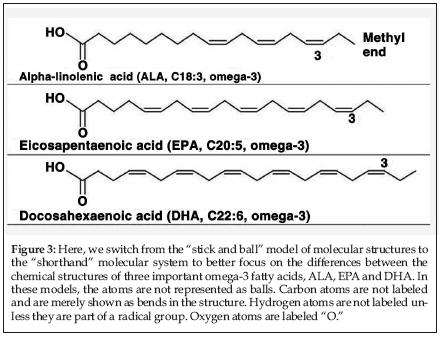
Figure 3 shows the chemical structures of these three omega-3 fatty acids.
Passwater: As I mentioned, we will discuss the biochemistry of various omega-3 family members in the next installment of this series. This is important to understand why the biological functions of EPA and DHA are different from ALA and why humans can transform only a very small amount of ALA into EPA and DHA. Therefore, all omega-3s may not be of equal importance to our health.
How did you confirm that they were indeed EPA and DHA?
Dyerberg: Dr. Holman gave me some pure EPA and DHA samples. I returned to Denmark and used these pure compounds as standards in the analysis. The chromatographic peaks that we observed were confirmed to be EPA and DHA. The Eskimos indeed had appreciable amounts of EPA and DHA in their blood.
Passwater: Could you tell if the EPA and DHA were present in their blood as free fatty acids or were they present primarily as components of triglycerides? As information for our non-chemist readers, fatty acids normally occur in nature as components of a larger unit commonly called a triglyceride, which is composed of three fatty acids on a glycerol backbone. Biochemists prefer to call triglycerides by the more descriptive name, triacylglycerols (TGA).
Were the fatty acid peaks due to their being liberated from triglycerides during the sample preparation for fatty acid analysis by gas chromatography?
Dyerberg: We found EPA and DHA in all plasma lipid classes, free fatty acids, triglycerides, cholesterol esters and phospholipids. In looking for them, we also found them in plasma from Danes, but to a much lesser extent (2).
Passwater: Did you have any idea at this time how EPA and/or DHA could be relevant to heart disease?
Dyerberg: No, but we also noticed that the Eskimos’ blood samples were lower in another fatty acid, arachidonic acid (AA). At that time, there were new scientific discoveries coming out of Sweden and England showing that blood clotting, among many other things, was regulated by components called prostaglandins.
Passwater: Prostaglandins are now recognized as members of a larger family of oxygenated fatty acids called eicosanoids. In the 1930s, a compound that originated in the prostate that caused a reaction in the uterus was discovered. But, it wasn’t until about 1973 that Hamberg and Samuelson discovered that compounds with similar structures affected platelet aggregation and, in turn, platelet stickiness and blood clotting.
Dyerberg: Yes, prostaglandins were synthesized in the body from AA.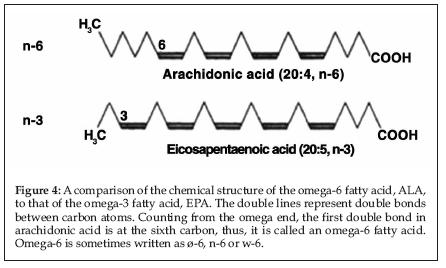 AA is an omega-6 polyunsaturated fatty acid found in meat. It has a chain length of 20 carbon atoms, the same number as EPA; but AA has only four double bonds, while EPA has five. The important difference, though, is that EPA has its first double bond in the omega-3 position and AA has its first double bond in the omega-6 position (see Figure 4).
AA is an omega-6 polyunsaturated fatty acid found in meat. It has a chain length of 20 carbon atoms, the same number as EPA; but AA has only four double bonds, while EPA has five. The important difference, though, is that EPA has its first double bond in the omega-3 position and AA has its first double bond in the omega-6 position (see Figure 4).
We then hypothesized that the shift in Eskimo blood from AA to EPA and/or its 22 carbon omega-3 cousin, DHA could “tune” their blood clotting into a less active state by changing the prostaglandin formation to components generated from EPA and/or DHA, thereby diminishing the risk for clots in their arteries and consequently their risk of heart attacks.
Passwater: This is where I found your research to be extremely exciting. Up until this point, I found your research very enlightening, but with this information, I found it to be compelling. So, I set about writing the first book on omega-3s nearly 30 years ago in 1981 based on your research. The book became one of the first of the Good Health series by Keats Publishing (3). The role of platelet aggregation and blood viscosity in heart disease made a lot of sense to me. You just don’t have a myocardial infarction unless you have a blood clot. Keeping the blood slippery and free from clotting will reduce the probability of having the common heart attack called an acute myocardial infarction (AMI or MI). We can discuss that later in Part 3, but for now, let’s continue with the detective story.
Your search for answers took you from Denmark to Greenland to the United States. What did you do next?
Dyerberg: In Dr. Hans Olaf Bang’s lab, we investigated whether EPA could give rise to the formation of prostaglandins with an effect on blood clotting. This, we found, fit with our hypothesis of an “anti-clotting” effect of EPA on blood. Then, we went back to Greenland to study the Eskimos’ blood and diets again.
Passwater: The journeys—scientific and physical—add up in years and distance. Physically, you have gone from Denmark to Greenland to Denmark to United States to Denmark and now back to Greenland.
What additional factors did you study on this trip?
Dyerberg: We then confirmed that EPA and DHA affected the clotting time of the Eskimos’ blood. This could be studied by measuring the Eskimos’ bleeding tendency. We examined this effect during new expeditions to northern Greenland, finding that the Eskimos actually had a longer cutaneous bleeding time. In 1979, again in The Lancet, we reported our results in a paper entitled “Haemostatic Function and Platelet Polyunsaturated Fatty Acids in Eskimos” (4). This paper also became a “nutritional classic.”
Passwater: Your findings at this point were quite fascinating. Humans certainly don’t produce many long-chain omega-3s in their bodies, so then you had to discover from where the EPA and DHA came. Polyunsaturated fatty acids are associated with plant foods, not animals. The snow- and ice-covered Arctic with its long periods of darkness is not conducive to growing plants, so isolated villages depended mostly on fishing and whatever else they could find hunting for food. The classical “Food Pyramid” for United States citizens has fats, oils and sweets in the smallest section with the recommendation to use them sparingly. I used to make jokes about the Eskimo food pyramid being composed of their main food groups of raw blubber, boiled blubber, fried blubber, baked blubber and roasted blubber. It was only a joke, but it made a point.
How did you connect omega-3 fatty acids in the blood to omega-3 fatty acids in the diet?
Dyerberg: As you know, not much was known at that time about EPA and DHA. What we found was that although fish and seals don’t make EPA and DHA themselves, they consume and concentrate these omega-3 fatty acids from the foods they eat. EPA and DHA are synthesized in the biosphere in the sea by algae. They then pass up the food chain via bigger and bigger organisms and finally via fish or, as for the Eskimos, seals that live on fish, into humans.
When we returned to Greenland, we collected food from the Eskimos using the cumbersome double-portion technique, homogenized the food and froze it for transportation for analysis in Denmark. We found that the Eskimos ate approximately 14 grams of EPA and DHA per day! (5)
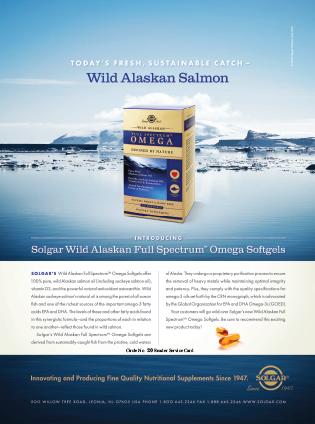
Passwater: Wow! Fourteen grams of EPA and DHA a day! And, most recommendations today are for at least one gram of EPA and DHA a day.
Getting back to your detective story, the next question then became whether the positive effects on the heart of omega-3 fatty acids from fish and fish oils that you found in the Eskimos could be transferred to our society by supplementing our diet with omega-3 fatty acids from fish oils?
Dyerberg: That’s a question that today, after nearly 40 years of research and after the undertaking numerous studies in volunteers and in patients with heart diseases, can be answered with an unambiguous “yes.” A 2009 survey of the preventable causes of deaths in the United States concludes that 84,000 deaths per year are attributable to low dietary omega-3 fatty acid intake (6)!
Furthermore, we have today obtained in-depth insight into how this beneficial effect is brought about. The studies have found that omega-3 fatty acids from fish oils have several positive effects; these effects work in combination, thereby lowering the risk of heart attacks. The same is true for patients already suffering from heart disease.
Passwater: How exciting. Let’s take another pause and pick up again here next month to discuss some of these effects of omega-3s and the clinical results that have been found. It is staggering to realize how much benefit has come from your pioneering discoveries. WF
References
1. J. de Goede and J.M. Geleijnse, et al., “Marine (n-3) Fatty Acids, Fish Consumption, and the 10-Year Risk of Fatal and Nonfatal Coronary Heart Disease in a Large Population of Dutch Adults with Low Fish Intake,” J. Nutr. 140 (5), 1023–1028 (2010).
2. J. Dyerberg, et al., “Fatty Acid Composition of the Plasma Lipids in Greenland Eskimos,” Am. J. Clin. Nutr. 28 (9), 958–966 (1975).
3. R.A. Passwater, EPA—Marine Lipids (New Canaan, CT, Keats Publishing, 1982).
4. J. Dyerberg and H. O. Bang, “Haemostatic Function and Platelet Polyunsaturated Fatty Acids in Eskimos,” Lancet 2 (8140), 433–435 (1979).
5. H.O. Bang, et al., “The Composition of the Eskimo Food in Northwestern Greenland,” Am. J. Clin. Nutr. 33 (12), 2657–2661 (1980).
6. G.M. Danaei, et al., “The Preventable Causes of Death in the United States: Comparative Risk Assessment of Dietary, Lifestyle, and Metabolic Risk Factors,” PLoS Med. 6 (4), e1000058 (2009).
Published in WholeFoods Magazine, July 2010 (pub. online ahead of print June 22, 2010)










